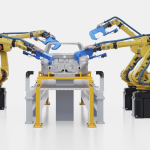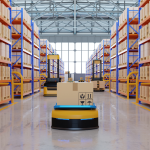Labor shortages and trade volatility are hitting supply chains on multiple fronts. From reshoring to recruitment, leaders must build strategies that flex with a fast-changing world.
A Dual Challenge for Global Operations
In 2025, supply chains around the world are facing a convergence of two major challenges: a persistent shortage of skilled labor and increasing uncertainty in global trade policy. Navigating either one is difficult—together, they require a more adaptive and measured approach from supply chain and operations leaders.
The talent crunch is not limited to one geography. Across North America, Europe, and parts of Asia-Pacific, industries like manufacturing, logistics, healthcare, and food production are competing for a shrinking pool of experienced workers. Front-line roles such as plant managers, warehouse supervisors, procurement specialists, and logistics analysts are especially difficult to fill.
Meanwhile, trade tensions continue to shape global supply routes. Whether it’s the potential for new tariffs in North America, shifts in EU–U.S. relations, or policy adjustments in Asia, the risk of sudden disruption remains high. For global manufacturers and logistics firms, this means rethinking location strategies, supply bases, and inventory buffers—often in parallel with workforce planning.
Resilience Requires Integrated Thinking
Workforce and trade strategy can no longer be treated in silos. If tariffs or policy changes shift production footprints, new labor needs will follow. Leaders must anticipate how trade decisions will ripple through their workforce models—and vice versa.
Hiring remains essential where demand supports it. But global firms should avoid overcommitting in unstable environments. Instead, invest in workforce flexibility: upskilling internal talent, cross-training teams, and building contingency plans that include both staffing and sourcing scenarios.
For example, reshoring or nearshoring efforts often look good on paper—but many countries lack the labor force or cost conditions to make rapid transitions viable. The reality is that global trade flows are sticky, and successful adaptation depends on more than duty rates. You need operational leaders who understand supplier diversification, can manage dual sourcing strategies, and are fluent in logistics disruption planning.
Talent strategy also means building pipelines. Whether it’s engaging universities, retraining displaced professionals, or rethinking onboarding, supply chain organizations should treat people development with the same rigor they apply to supplier management.
Building Resilience at the Intersection of Talent and Trade
The global supply chain is no longer simply a function of cost, efficiency, or technology. It’s a living system that now hinges on two deeply interconnected variables: people and policy. In 2025, the ability to navigate trade volatility is directly linked to an organization’s agility in workforce planning—and vice versa.
Many leaders are still treating talent and trade as separate domains: HR handles hiring; procurement watches tariffs; operations reacts downstream. But the most resilient supply chains are being run by teams that are fusing these considerations into a unified strategy. Why? Because when you shift production to mitigate tariffs, you also shift your labor needs. When a new facility opens closer to demand, the challenge isn’t just logistics—it’s staffing. And when regulatory pressure hits sourcing, it affects not only what you buy and from whom, but also the competencies your team needs to manage risk.
Strategic workforce planning must therefore be baked into broader supply chain resilience strategies. That means mapping out not only suppliers, but skills. Knowing where your vulnerabilities lie—not just geographically, but functionally. It means planning beyond short-term cost control and investing in long-term capability: cross-functional talent, scalable onboarding, data fluency, and leadership that thrives amid ambiguity.
Global trade tensions will ebb and flow. Technologies will continue to evolve. But no AI model or digital twin will make up for a lack of skilled, empowered people who understand how to lead through complexity.
The task ahead isn’t to eliminate disruption—it’s to be prepared for it, structurally and culturally. We cannot simply reacting to market noise; we must build organizations that can hear the signal and act on it, faster than the competition.







